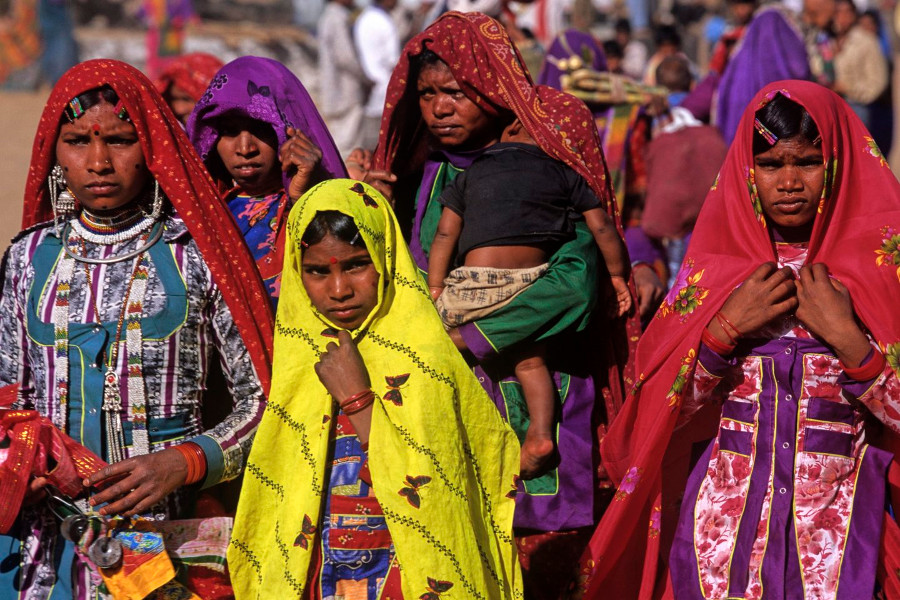 |
|
Repression of indigenous people continues in India A fact-finding team, however, rejected the police’s accusations. Prominent activists Bela Bhatia and Jean Dreze, who were part of the team, said the people who inhabited the area were “opposed to the CRPF camp fearing harassment”. They concluded in their report that they had not found any evidence to support the police claim that “an armed group of 3 000 agitators, including Maoist cadres, took over the peaceful protests on May 17 and intended to burn down the CRPF camp, leaving the forces with no choice but to open fire”. Tensions in Silger village, located about 485kms from Chhattisgarh’s capital city of Raipur, escalated after the paramilitary established one of its security camps there, saying it would help the building of a road between Basaguda and Jagargunda. However, thousands of Adivasi people resented their presence and demanded the immediate removal of the camp. Under law, the indigenous villagers living in scheduled areas like Chhattisgarh’s Bastar region, where Silger is situated, have to be consulted before their land can be used for any purpose. The villagers have been angry with the increased militarisation of the region as the camp the CRPF established is within walking distance from one of at least 28 similar camps that have been set up in Bastar in the past two years, as per government figures. No one listening to their pleas Every time the villagers tried to talk with the CRPF officials about the Silger camp, they were reportedly met with threats, baton charges and tear gas. Meanwhile, after word of baton charges on Adivasi people reached neighbouring villages, the residents rallied in their numbers to support the Silger villagers to negotiate with camp authorities. On 17 May, about 15 000 people began moving close to the camp at around 11:20am. CRPF personnel first fired shots in the air and then directly at the crowd, killing three people, including a 14-year-old. The protests in Silger have persisted since the incident. On 15 July, three men were killed in Pedapal by the District Reserve Guards and dubbed “cadres of the outlawed” Communist Party of India (Maoist) by the state apparatus. But according to a resident of Bastar, they had “gone to Nilbaya in search of cows when the police dragged them using ropes. They were having meals in the evening when police took them out in the ropes and opened fire on them.” Up to 31 July, 54 incidents of killings resulting in the deaths of 91 people have been reported in the restive state of Chhattisgarh. Bastar, underdeveloped but rich in minerals such as iron ore, bauxite and coal, has long been a thorn in the side of the state apparatus, which relies on its military strength to take control of these resources that lie in the land of the Adivasi community. The process has triggered a decades-long armed rebellion led by Maoists. The continuing fighting has led to the displacement of thousands of Adivasi and, according to several human rights organisations, more than 4 000 people have been killed since 2001. But the initial upheaval started in the 1960s when the central government decided to divest the king of Bastar, Pravir Chandra Bhanj Deo, of his authority, plunging the region into chaos. In the protests that followed, the king was killed. The conflict has been escalated by the arrival of powerful commercial entities, which have been accused of land grabbing and resource exploitation. In the 1980s, the Forest Conservation Act further alienated the indigenous people, many of whom live in the region’s forests and felt they were being deprived of their right to their land. After India embraced liberalism in the 1990s, opening its markets to the world and embracing globalisation, permission was granted to rich individuals to set up steel plants in the region. This paved the way for them to make huge profits out of resources that should have benefitted the local Adivasi, who have felt increasingly resentful of land grabbing and their displacement. Tackling the ‘insurgents’ In 2005, Chhattisgarh state created a militia, Salwa Judum, by arming a civilian group to fight its battles against those trying to protect their lands, whom the state called “armed Maoist insurgents” and the “single-biggest threat to India’s internal security”. In his 2010 essay, Days and Nights in Maoist Mainland, human rights activist Gautam Navlakha quoted a pamphlet of the Maoists stating that on 4 January 2009 “17 Adivasis were killed, four of them women. The women were reportedly gang-raped and then murdered. Similarly, in West Bastar’s Minkapalli, six Adivasis were killed.” The killing of thousands of marginalised people has been taking place for many years. “Since 2005, more than 1 000 Adivasis have been killed, hundreds of them raped and more than 700 villages burnt,” Navlakha wrote. In 2009, the national government led by then-prime minister Manmohan Singh began its so-called Operation Green Hunt, an offensive against armed rebels in what was called the “Red Corridor” – large parts of the states of Chhattisgarh, Andhra Pradesh, Jharkhand, Odisha and Bihar where most of the insurgent activity was. A similar counter-insurgency operation known as Prahar started in 2017 to try to get rid of the Maoist militants. In June 2012, government forces killed 17 Adivasis in Sarkeguda village in Chhattisgarh, among them seven children. The police initially said they were Maoist guerillas, but a judicial commission found in December 2019 that the victims had been civilians. Human rights organisations as well as critics of the Maoists have accused them, in turn, of killing hundreds of civilians in the violence and abducting those they suspect of collaborating with the government’s forces. Armed groups such as the People’s Liberation Guerrilla Army – the military wing of the Communist Party of India (Maoist) – recently attacked the paramilitary and special task forces of the government, killing 22 security personnel in Chhattisgarh’s Bijapur district on 8 April. The accusations levelled against the Salwa Judum finally compelled the Supreme Court of India to ban the government-sponsored militia in July 2011. Two years later, its founder, Mahendra Karma, was killed by Maoists. Author Nandini Sundar writes in her 2016 book, The Burning Forest – India’s War in Bastar, that Salwa Judum would often accompany the paramilitary forces on their march into villages and force their inhabitants to relocate to camps. The strategy was akin to the one used by the British in Malaya and the Americans in Vietnam, she writes, and the main agenda behind these relocations was to cause maximum trouble to the rebels by damaging “their food, shelter, intelligence and recruits”. “In these years, there has been no investigation and no prosecution,” Sudar said. “At least 800 cases are still pending at the Supreme Court. The State claims on the one hand they have removed the Maoists threat in the region. On the other hand they are densely militarising the region on the pretext of roads and development making the life of ordinary villagers more troublesome.” https://www.newframe.com/repression-of-indigenous-people-continues-in-india/ Back |
 Links Search |
||||||
|
|||||||
